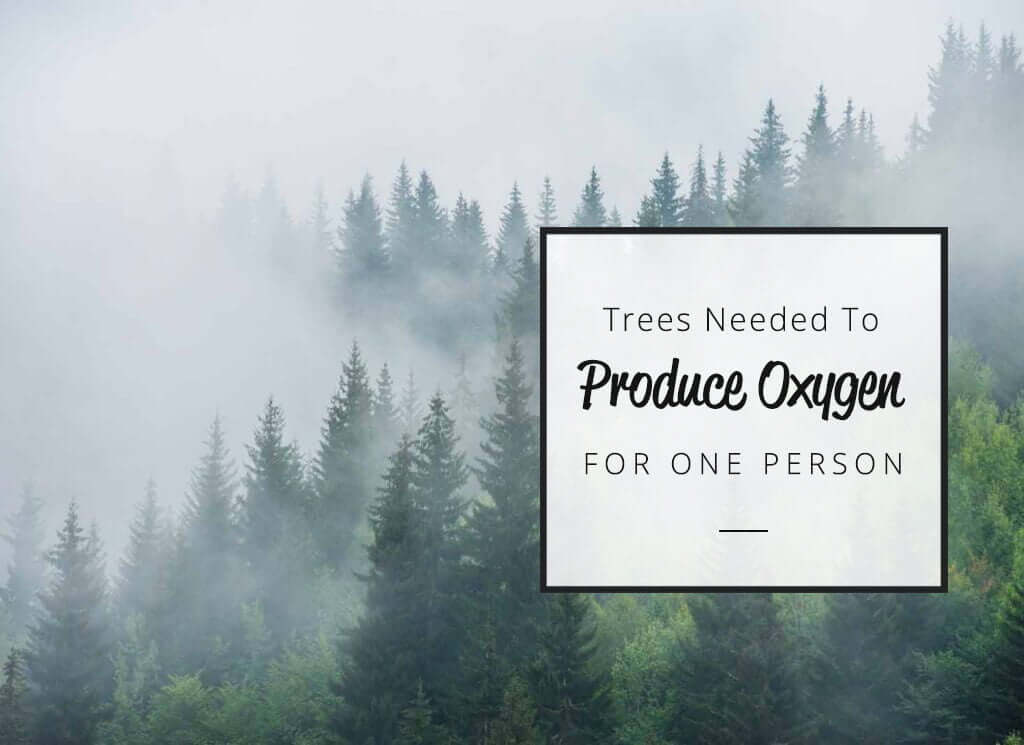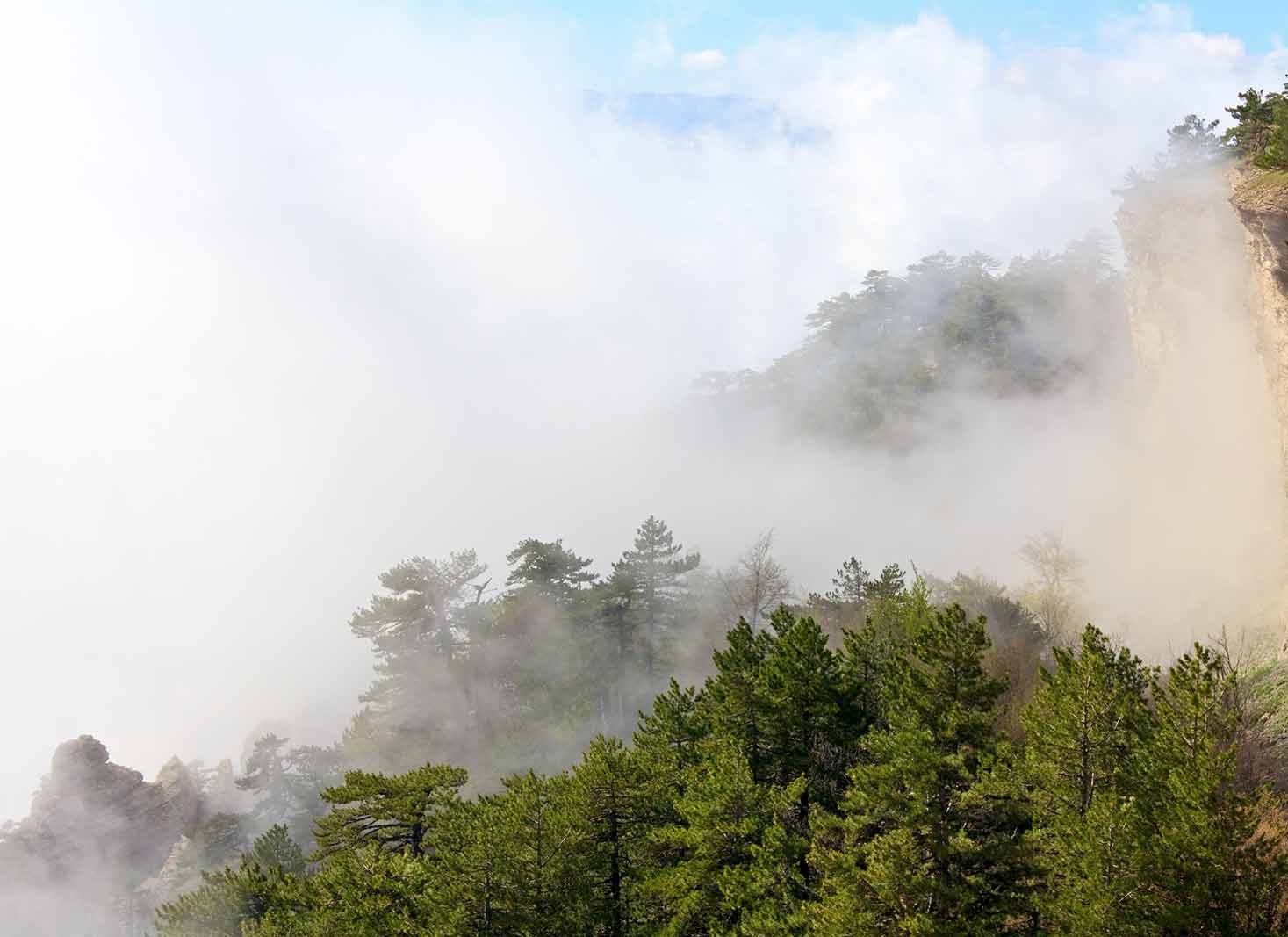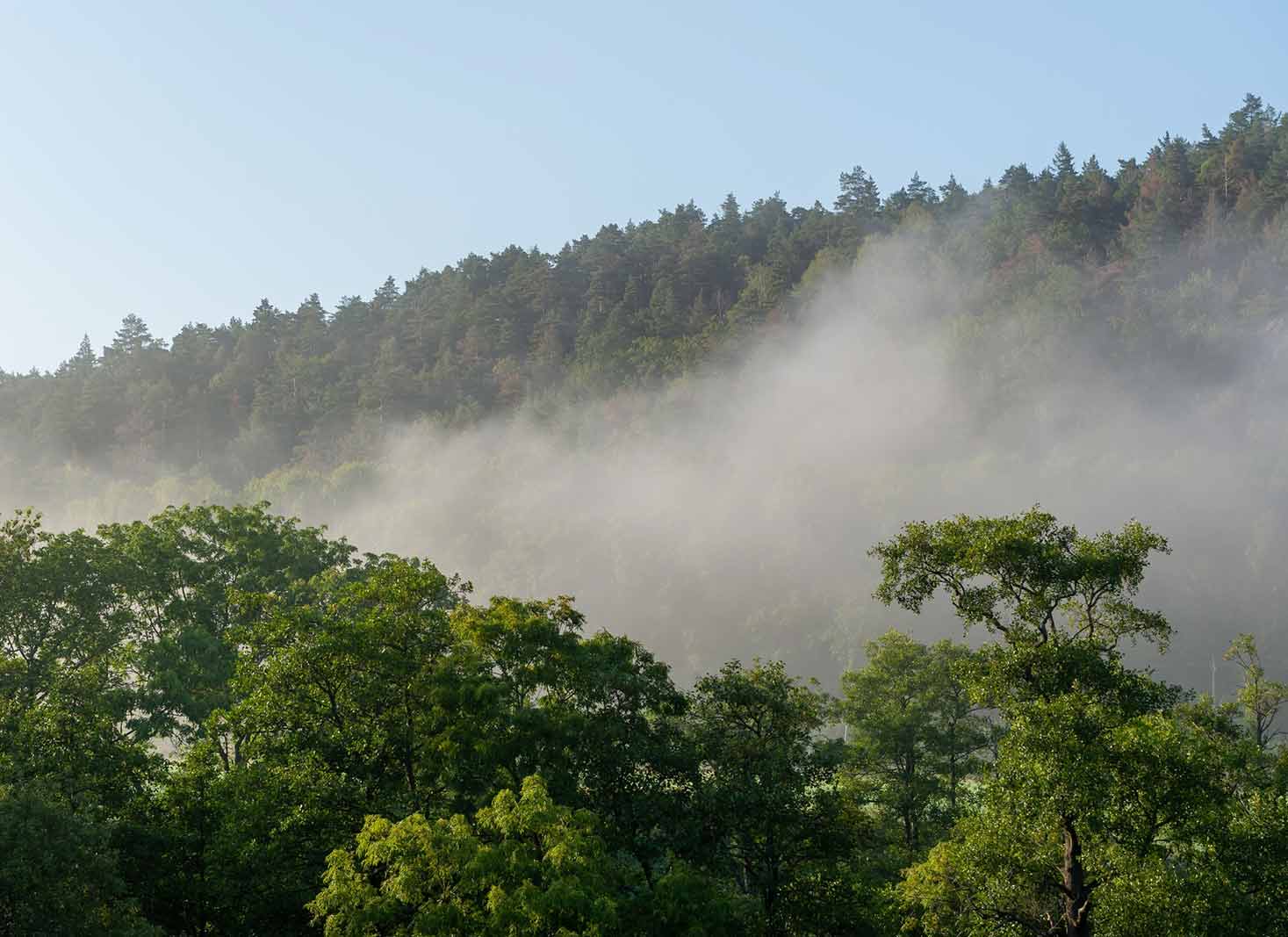One person breathes approximately 9.5 tonnes of air in a year. With oxygen only making up about 23% of the Earth’s atmosphere, one human can only extract over a third of the oxygen from each breath.
Therefore, by mass, roughly 740kg of oxygen per year is used by a single person. On average, it would take 7 – 8 trees fully grown trees to produce 740 kg of oxygen each year.
Trees do produce different amounts of oxygen due to several factors including their rate of growth and overall size.

What we cover
ToggleHow does a tree produce oxygen?
Oxygen produced by trees is a byproduct of photosynthesis. This is the process by which trees use carbon dioxide (CO2) from the atmosphere and water (H2O) from the ground to turn sunlight into food for themselves.
Even though trees are not the Earth’s main providers of oxygen, as most of the oxygen we breathe comes from marine plants, they are an essential part of a complex ecosystem that sustains life on earth for humans, animals, birds and insects.
Their ability to store carbon dioxide in their fibers as they grow helps the earth in having clean air and reduces the negative effects of too much carbon dioxide in the environment.
How much oxygen does one tree produce?
There are several factors to consider before calculating the amount of oxygen produced by a tree.
Depending on the type of tree, a tree can produce anywhere from 20 gallons to 108 gallons of oxygen annually. One tree can produce up to 30,000 gallons of oxygen in its lifetime.
The average amount of oxygen a tree produces annually is around 108 gallons. This number is calculated based on the average amount of water a tree consumes in a day and the amount of carbon dioxide it consumes.
The amount of oxygen a tree can produce also depends on how healthy it is. A healthy tree can produce more oxygen than an unhealthy one.
In addition, trees in a healthy environment will produce more oxygen than trees in an unhealthy environment. This also includes the seasons in a year. There are different amounts of oxygen produced by trees in the winter and in the summer.
How much oxygen does a tree produce per day?
The amount of oxygen a tree can produce per day depends on the size of the tree, the species of the tree, its age or maturity, and the environment where it is growing.
Generally, one tree can produce up to 40 liters of oxygen per day. This amount of oxygen is enough for two people in one day.
A tree can consume between 1/2 to 10 gallons of water per day. The amount of water a tree consumes varies as it depends on many factors, including the tree’s type, local climate, soil conditions, and the tree’s size.
How much oxygen does a tree produce per year?
A healthy tree can produce anywhere from 20 to 108 gallons of oxygen per year which is supposedly enough for two people. As mentioned before, the tree’s health, the environment it grows in, and its type also affect its ability to produce oxygen.
You can actually help trees to produce more oxygen by planting them in the right environment where they get sufficient sun exposure. Another thing is to make sure they are growing in suitable soil, with rich nutrients.
Lastly, maintaining the trees’ health through regular pruning and inspection will also help them produce more oxygen.
As long as we take care of the trees, which are considered to be the lungs of the planet, they will produce filtered, fresh air and provide us shade with their cooling effect.
How much oxygen does a tree produce in its lifetime?
Depending on the species of the tree, it can live anywhere from 30 to 500 years. For example, oak trees can live for about 200 years, and pine trees can live for about 200 years.
In fact, the oldest living tree on earth has reached more than a thousand years of age.
Because it takes about 10 years for a tree to reach full maturity, it can be said that a tree has the ability to produce oxygen for its entire lifetime.
The amount of oxygen a tree produces per year depends on its size. Large trees produce more oxygen than small trees. Evergreens produce more oxygen than deciduous trees. And some trees produce more oxygen in certain conditions.
For example, a cherry tree produces more oxygen when in bloom. The amount of oxygen a tree produces per year also depends on the environment where it’s growing.
What percentages of oxygen do trees produce for the planet?
Trees provide around 28% of the oxygen in the atmosphere. 70% is produced by the ocean and marine plants with the remaining 2% coming from cyanobacteria.
The amount of oxygen trees produce is also important in reducing carbon dioxide (CO2) levels in the atmosphere. This helps to reduce the effects of global warming and climate change.
Our trees are also natural air filters, cleaning the air we breathe by trapping dust, polluting particles, and other toxic substances.
Healthy trees also produce a wider variety of pollinating insects, which are necessary for plant reproduction and a healthy ecosystem.
Overall, trees are essential for the survival of humans and other life forms on earth. They produce oxygen and help to reduce the levels of carbon dioxide in the atmosphere.
Do all trees produce oxygen all the time?

Not all trees produce oxygen all the time. Deciduous trees like chestnuts, oaks, aspens, and maples are not able to store carbon dioxide from the atmosphere and produce oxygen when they start to lose their leaves during the fall season.
The leaves play a big part in how trees absorb carbon dioxide from the air and convert it into oxygen. In fact, photosynthesis actually occurs in the leaf, specifically its green parts called chloroplasts.
It is also through the leaves’ pores called stomata that it gets its ability to absorb carbon dioxide and release the oxygen it just created.
As these trees start to lose their green colors and their leaves during the fall or winter, they can no longer absorb carbon dioxide from the atmosphere to perform photosynthesis. Some trees make their own carbon dioxide.
How do trees help with climate change?

Trees naturally produce oxygen and store carbon in their roots, branches, and leaves. When a tree dies, the stored carbon decomposes and returns to the atmosphere, where it becomes carbon dioxide.
These natural processes help to regulate the concentration of CO2 in the atmosphere. The CO2 concentrations in the atmosphere are rising due to human activities such as burning fossil fuels and deforestation.
As CO2 levels rise, the planet warms up. This causes extreme weather such as droughts, floods, and hurricanes. Therefore, the presence of trees helps reduce CO2 levels in the atmosphere and mitigate climate change.
In order to grow, maintain, and maximize the production of trees, you must be knowledgeable of what is required of the tree and the environment.
You must also be dedicated in order to successfully complete the task of growing and maintaining trees for maximum oxygen production.
With the right guidance, you can learn how to grow and maintain trees to ensure maximum oxygen production for a healthy and safe environment.




